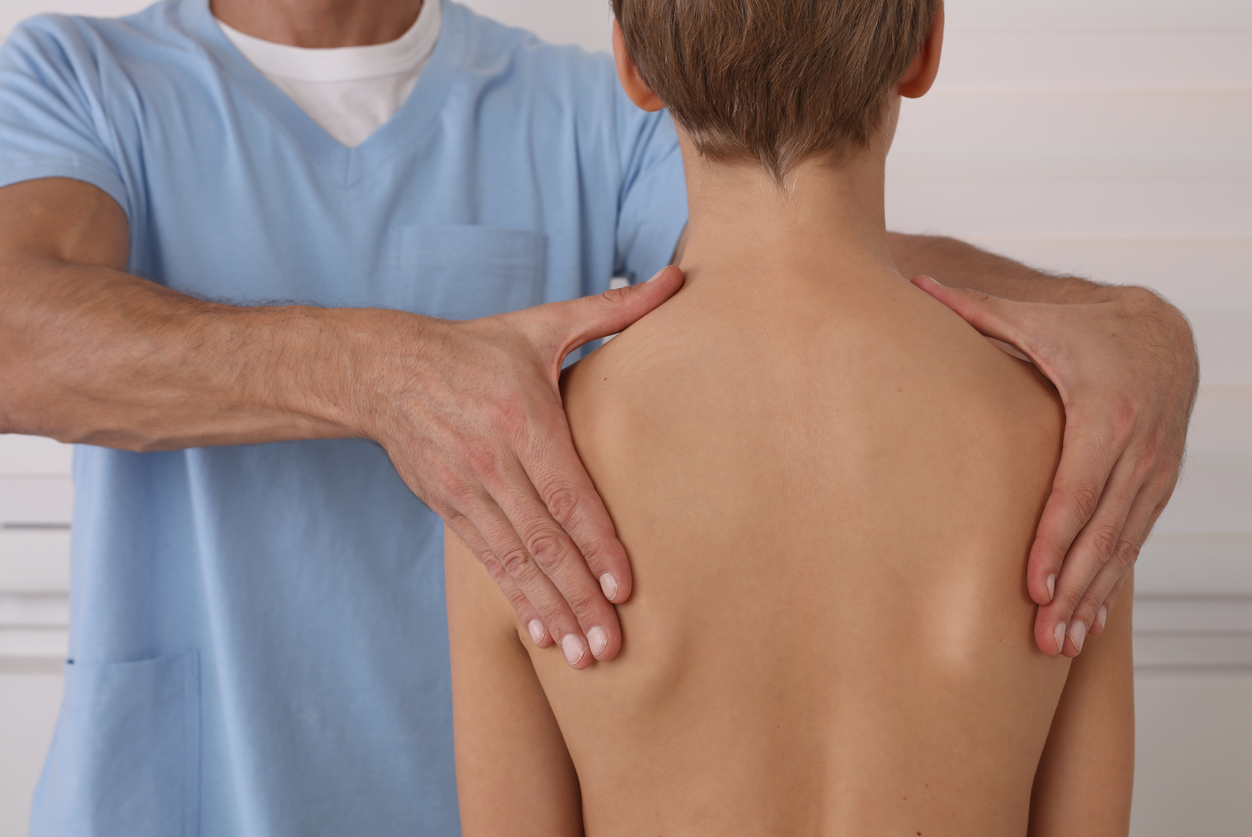Scheuermann’s disease is a deformity of the spine resulting in an abnormal front to back curvature known as kyphosis. The condition produces a rounded hunchback appearance, and the patient is not able to straighten the back when standing up. Scheuermann’s disease is also referred to as Scheuermann’s kyphosis. The problem generally affects the thoracic, or middle part, of the spine but occasionally occurs in the lower back.

Who is affected?
It is not known what causes Scheuermann’s disease. The disease typically begins during a pre-puberty growth spurt, sometime between ages of 10-15 years. More boys are affected than girls. The thoracic vertebrae begin to grow unevenly. Normal spinal vertebrae appear as stacked rectangles. In Scheuermann’s disease, the vertebrae develop a wedge shape. When viewed from the side, there is an exaggerated forward curvature of the patient’s spine. Once these bones finish growing, the curvature usually does not worsen.
What are the symptoms?
Mild cases of Scheuermann’s disease may not produce many noticeable symptoms. In more severe cases, the back pain can be significant and cause limitations in physical activity. Adolescents often complain to their parents about back pain. The pain can be exacerbated by long periods of sitting, as in a typical classroom setting. Activities involving bending, twisting, and long periods of standing also cause pain. Flexibility may be limited. Other complaints include stiff or tired muscles, muscle cramps, feeling off balance, and tight hamstring muscles.
Sometimes the spinal deformity is quite noticeable and can cause loss of vertebral height. It can put pressure on internal organs, including the lungs. People with Scheuermann’s disease are prone to having lower than normal bone density, which increases their risk of bone fractures.
Although patients do seek treatment because of the back pain, many seek help for cosmetic reasons. Psychological impacts can be significant. Adolescents are self-conscious about their appearance, and they may feel the deformity causes them to be ostracized among their peers.
How is Scheuermann’s disease diagnosed?
Diagnosis would include a thorough physical examination including observation of the patient’s posture. Testing may include a CT scan of the thoracic region. X-rays would be needed to confirm the extent of the spinal curvature, which is measured in degrees. A curvature of 45 degrees or more and generally three or more vertebrae wedged together is an indication of Scheuermann’s disease.
Treatments for Scheuermann’s disease
Treatments in mild cases of the condition that are not causing pain are often conservative. They may include physical therapy exercises and back bracing. Braces used to be bulky and uncomfortable. However, today’s custom braces are more comfortable and may even allow the patient to participate in some sports activities. In extreme cases where other treatments have not helped, surgery may be recommended to fuse the vertebrae or stabilize the spine with titanium rods. Recovery from surgery can be a long process, with the patient having restricted activities during the healing process.


